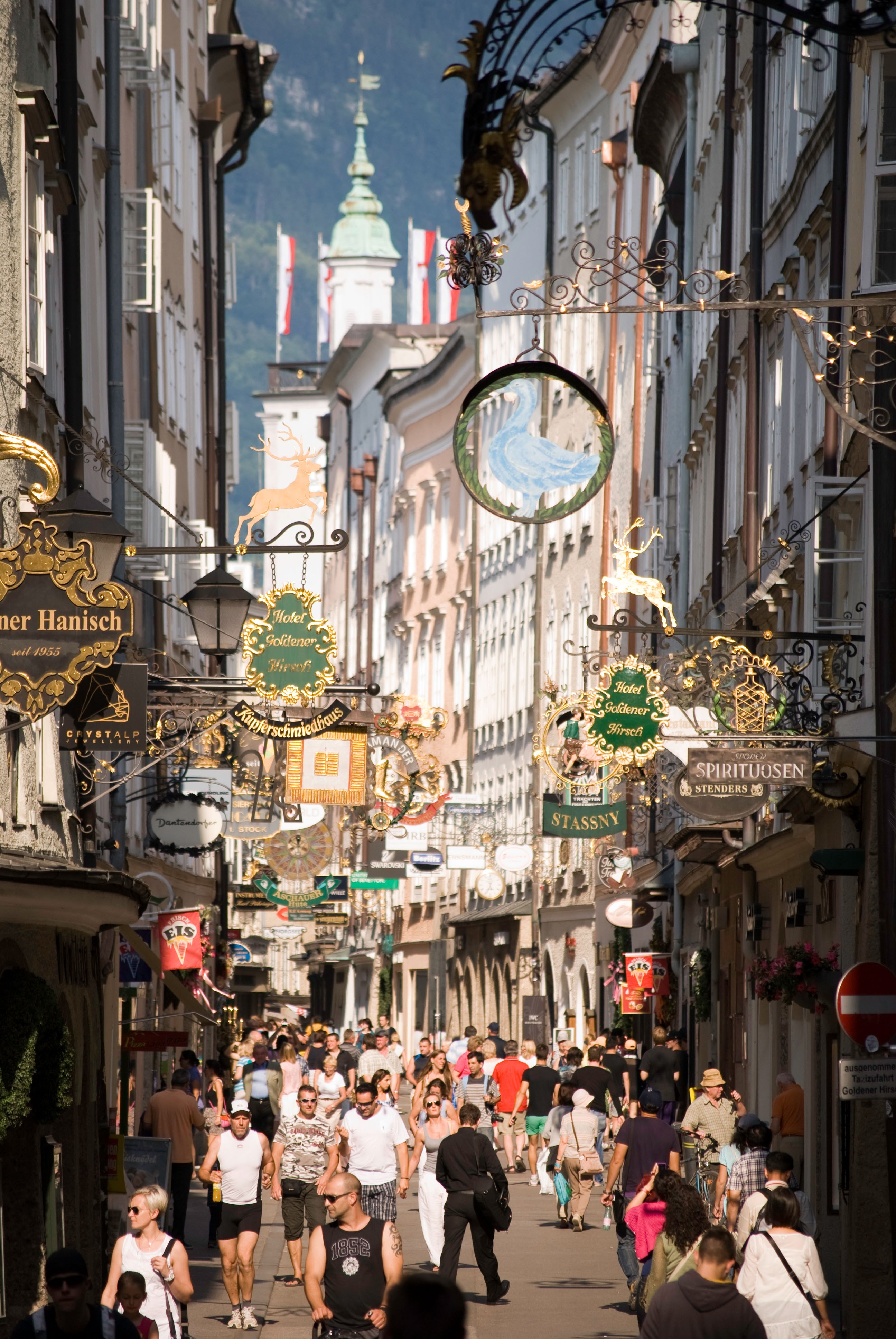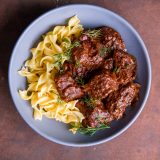If you want authentic Austrian food in Salzburg, head to s’Herzl on Getreidegasse, the main shopping street. At first, one appears to have entered an Epcot dining experience—the small dining room is wood-paneled and suitably medieval, and the waitstaff wear the classic Austrian dirndl.
Fortunately, the food is more than solid, and one is not subjected to the best hits from “The Sound of Music.” (That movie, by the way, is about as culturally accurate as, say, the portrait of small-town Iowa in “The Music Man.”) The go-to dishes are the Weisswurst with large soft pretzels, served with Senf, a slightly sweet mustard; or the Gemischter Salat, which is a mix of grated carrots, greens and cucumber with dill, and first-rate Austrian potato salad.
Wienerschnitzel is best ordered in Vienna, where it is served crispy, piping-hot and with the correct thickness of coating to meat. But when at s’Herzl, always order a Stiegl—the local beer—which is clean and bright. Other staples include Tafelspitz (boiled beef with horseradish sauce and root vegetables) and Rindsgulasch, the classic Austrian beef goulash, or beef stew.
Austrian goulash is a very particular dish. The sauce is thick and creamy-smooth—different from a Hungarian goulash, which is brothier. It is flavored with distinct notes of dill and caraway. Given the large amount of paprika, the color can be mahogany, even oxblood. Beef is the meat of choice, though goulash can be made with pork or even veal, the latter being rare.
One can get a more than decent version of this dish in New York, at Café Sabarsky at the Neue Galerie at East 86th Street and Fifth Avenue. Chef Kurt Gutenbrunner uses a hefty dose of onions to create a velvety, paprika-heavy sauce for boneless beef shins. It is usually served with Spätzle or Semmelknödel (bread dumplings). This dish is entirely different from Gulaschsuppe, which is, as its name suggests, more soup than stew and served with potatoes.


The key to this recipe is the smooth, buttery sauce. At Milk Street, if we skipped using a thickener, we were left with a watery sauce. But a cornstarch slurry didn’t produce the rich undertones that this dish calls for, either. So we employed a familiar thickening method—adding flour to the butter-softened onion to create a roux, which we then spiced with caraway. (As it turns out, this technique is not so unusual for goulash; according to my Salzburg in-laws, a roux is standard operating procedure.) We then stirred in both sweet and hot paprika.
Next, we whisked in 2 cups of beef broth fortified with tomato paste (we prefer water in most stew applications, but this dish calls for a rich foundation). The raw beef, which we seasoned with salt, pepper and paprika, went in along with marjoram and bay leaves.
We cooked it covered in a 325°F oven for two hours, but the stew is finished uncovered—a method Milk Street has purloined (the Spanish and Italians figured this out centuries ago). Cooking uncovered allows the heat of the oven to brown the meat, avoiding the annoying recipe directive, “brown the meat in two or three batches.” Finally, we added fresh dill and a touch of cider vinegar to punch up the flavors.
Taste memory is a powerful thing. My first spoonful of Milk Street’s goulash brought me right back to s’Herzl. The sauce was buttery, smooth and creamy, and the taste of onion, dill and caraway were evident but secondary to the beef and paprika. The dish is subtle—a bit like the Austrians themselves. Ask a Salzburg native about the “Sound of Music” tour and they will smile and reply, “Ich verstehe nicht,” pretending that they don’t speak English, patiently waiting for the tourist season to end.




